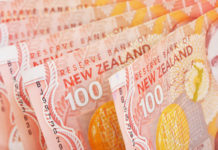Markets
On Friday, US and European yields envisaged an end of week countermove. The correction occurred as even ECB and Fed speakers maintained the ‘higher for longer mantra’. ECB’s Wunch indicated that a 4% policy rate isn’t excluded if (core) inflation doesn’t cool. Other ECB members (Vasle, de Guindos, Muller) were less specific but also committed to bring (core) inflation back under control. However, the comments didn’t prevent an end-of-week correction with German yields easing between 0.1 bps (2-y) and 3.9 bps (30-y). Still, technically, the yield-uptrend remains firmly intact with the German 10-y yield closing the week well above the previous 2.57% resistance. The correction in US yields was even more outspoken even as the intraday downtrend was temporarily interrupted after the release of the services ISM. The headline index stabilized firmly in expansion territory (55.1), with strong orders (62.6), further employment growth (54.0) and persistent prices rises (65.6). Fed’s Barkin and Collins also indicated the Fed has more work to do. Even so, after a brief post-ISM uptick in yields, US Treasuries rebounded further with yields easing from 2.9 bps (2-y) up to 11.8 bps (30-y). The correction was solely due to a decline in real yields. Inflation expectations again even rose a few bps. The decline in (real) yields supported further equities gains (Dow +1.17%; Nasdaq +1.97%). The Euro Stoxx 50 rose 1.28% to close less than 3.0% from the 2021 peak. Risk-on sentiment caused a modest setback of the dollar (DXY close at 104.52, EUR/USD close at 1.0635), but the US currency didn’t give up any important support. EUR/GBP dropped from the 0.887 to 0.883, but firmly held within tight 0.88/0.89 week ‘extremes’.
This morning, Asian equities modestly join Friday’s risk rally on WS. China underperforms. Markets apparently expected a more growth supportive approach from the Chinese government (cf infra). US yields and the dollar are easing marginally further (EUR/USD 1.0645). Later today, the eco calendar mostly contains second tier data. Later this week, the focus will be on Fed Powell’s testimony before Congress (Tuesday before Senate/Wednesday before the House) and Friday’s US payrolls. Powell will confirm that the Fed’s job on inflation isn’t finished. Question is whether he will already indicate that the Fed will have to go beyond the December dots (5.5%+). If not, some more consolidation in US yields might continue going into the payrolls. The decline in EUR/USD also takes a breather, with the correction low at 1.0533. In case of a further USD correction, the EUR/USD 1.0803 mid-February top serves as a first resistance. Also keep an eye at the policy meetings of the Reserve Bank of Australia (Tuesday), The Bank of Canada (Wednesday) and the Bank of Japan (Friday). US Treasury auctions (3-y, 10-y, 30-y) also will provide an indication on investors’ appetite for (US) bonds after recent repositioning.
News and Views
China has set a growth target of 5% this year. The rather modest goal is seen as restoring Beijing’s credibility after missing last year’s target (around 5.5%) by a wide margin for the first time ever. It also suggests that there won’t be any large stimulus measures. Premier Li said that boosting demand (consumer spending and investment) will be the top priority. They planned for an urban job creation of around 12 million vs the 11 million last year. The fiscal deficit was raised from 2.8% to 3% of GDP. Yet, local governments are given smaller quota for special bonds used mainly to finance infrastructure. It indicates the government is seeking to strike a balance between supporting the economy and strained finances as well as prevent spiraling commodity inflation. Headline price increases are expected to stick around 3%. China’s yuan is trading a tad weaker this morning with USD/CNY eking out a gain to 6.915.
South Korean inflation eased in February. The headline figure came in at 4.8% y/y (0.3% m/m), down from 5.2% and less than the 5% expected. A core gauge retreated from 5% to 4.8%. All categories but transport (-0.7% m/m) rose, suggesting still-widespread pressures, despite the deceleration. The central bank of South Korea (BoK) has lifted policy rates by 300 bps since August 2021 to 3.5%. It stood pat last month but the governor said it shouldn’t be seen as the end of the tightening cycle. Indeed, most board members wanted to keep the door open to lift the key rate to 3.75%. While the domestic economy is slowing down, the BoK is wary for the Fed’s aggressive tightening cycle and its effect on the won. At USD/KRW 1296.8 (unchanged vs. Friday) the SK won is trading at a relatively weak level.












